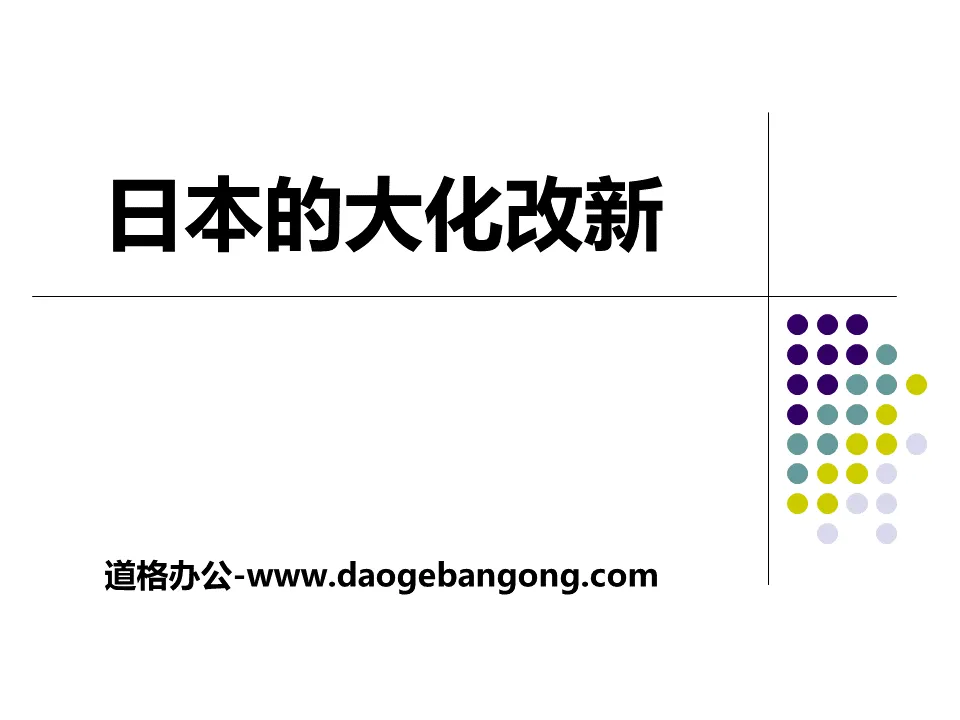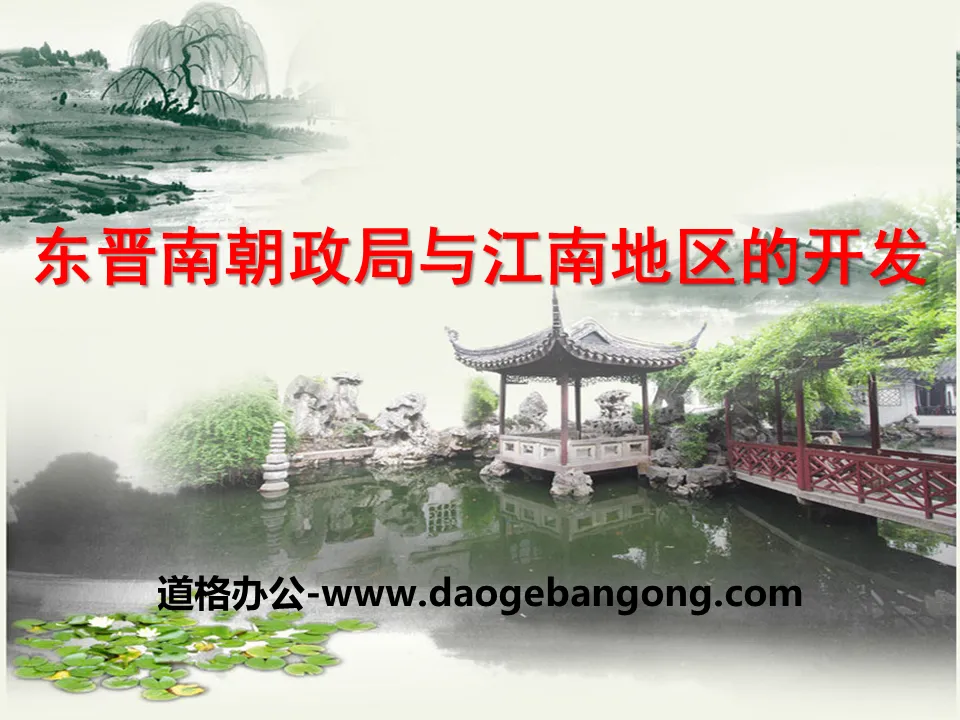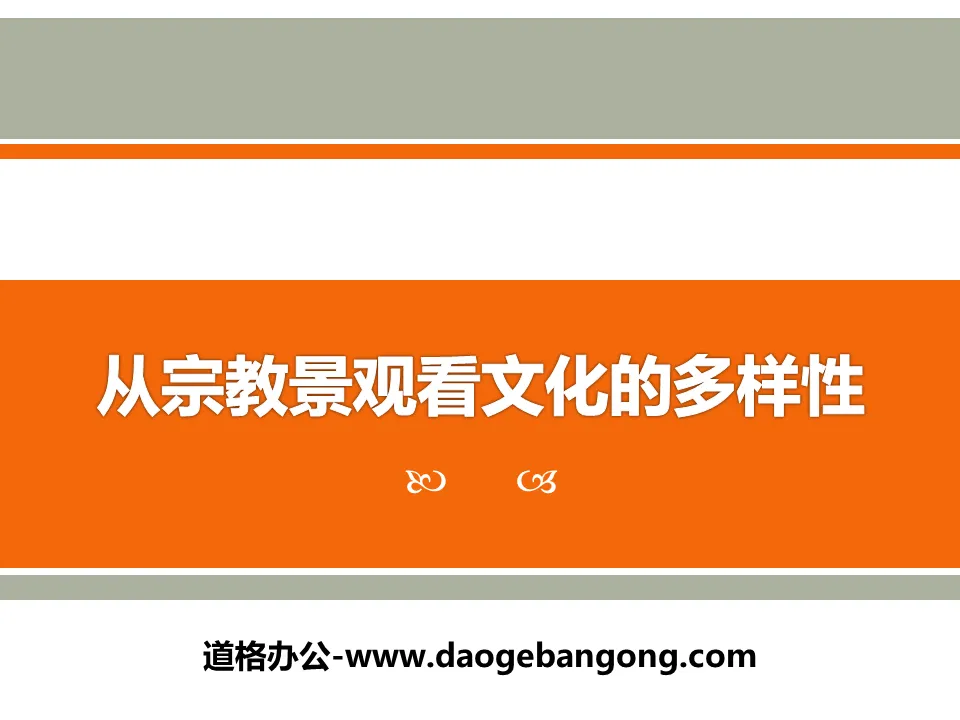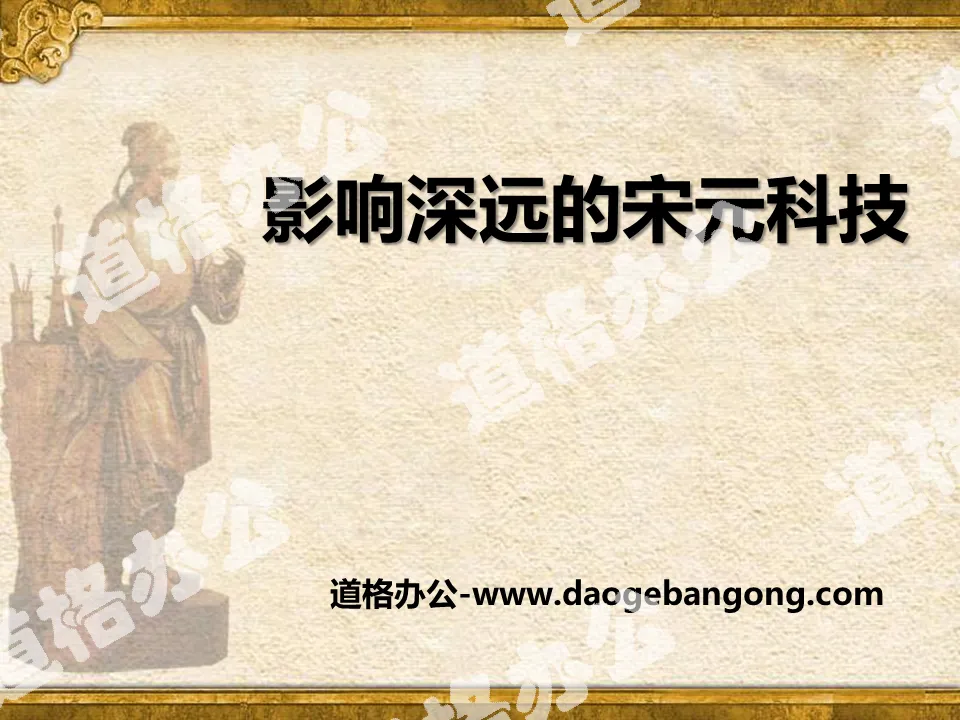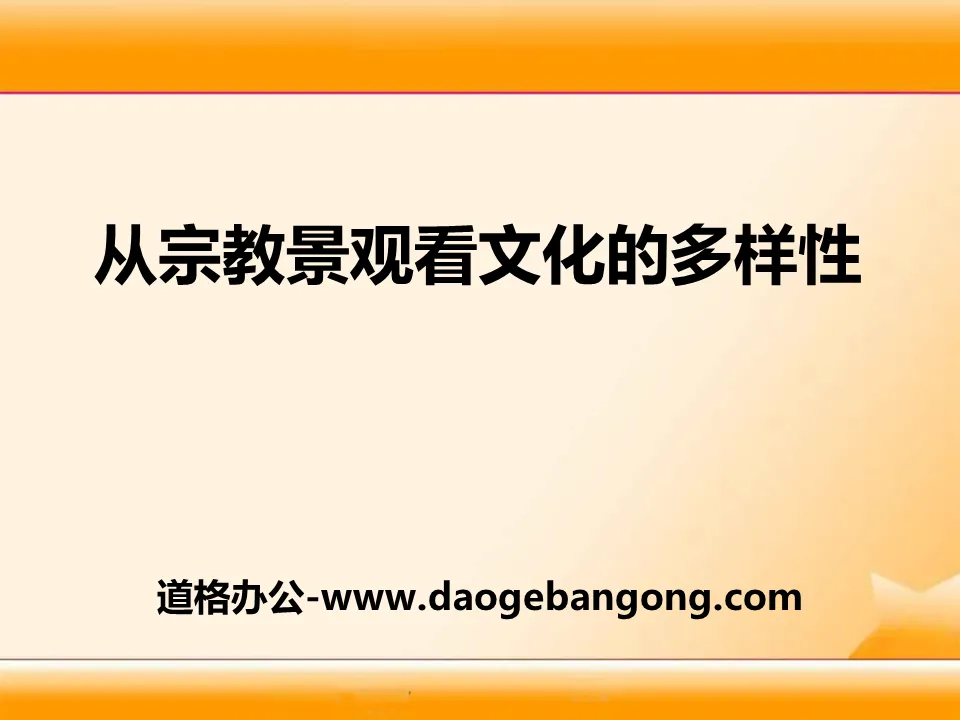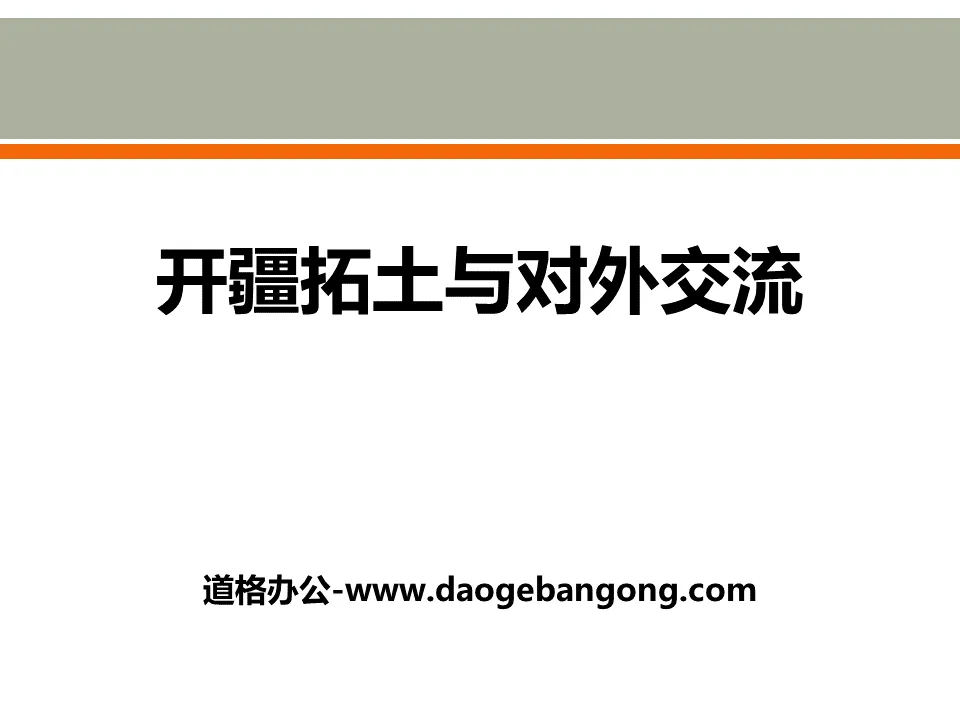
| Category | Format | Size |
|---|---|---|
| People's Education Edition History and Society for Grade 8 | pptx | 6 MB |
Description
"Opening up territories and foreign exchanges" PPT courseware on the establishment and development of a unified multi-ethnic country
Part One: Relations with the various ethnic groups in the Western Regions
1. Scope and overview of the Western Regions
①Scope of the Western Regions
②Overview of the Western Regions
2. Zhang Qian’s mission to the Western Regions
①Purpose: Contact Da Yuezhi to jointly attack the Xiongnu
②Overview: In 138 BC, Zhang Qian made his first mission to the Western Regions.
In 121 BC, the Han Dynasty defeated the Huns and occupied the Hexi Corridor and established four counties.
In 119 BC, Zhang Qian made his second mission to the Western Regions.
③Function: The mission has not been completed, but the mission to the West has enabled people to understand the economic, political and cultural conditions of the countries in the Western Regions, as well as their desire to communicate with the Han Dynasty.
The Han Dynasty had frequent economic and cultural exchanges with the Western Regions
3. The establishment of the Western Region Protectorate
PPT on territorial expansion and foreign exchanges, part 2: relations with all ethnic groups in the Western Regions
1. What is the geographical scope of the Western Regions?
During the Han Dynasty, the Western Regions referred to the areas west of Yumenguan and Yangguan in today's Gansu Province, which is now Xinjiang and the areas further west.
Zhang Qian (about 164 BC - 114 BC), Han nationality, courtesy name Ziwen, was born in Chenggu, Hanzhong County (now Chenggu County, Shaanxi Province). He was an outstanding explorer, traveler and diplomat in the Han Dynasty of China. exchanges and the development of the Silk Road. The Han Dynasty opened up the north-south road leading to the Western Regions, and introduced sweat horses, grapes, alfalfa, pomegranates, walnuts, flax, etc. from the countries in the Western Regions.
2. Zhang Qian’s mission to the Western Regions
(1) Zhang Qian’s first mission to the Western Regions (138 BC, before defeating the Huns)
Purpose: Contact the Dayue clan to jointly attack the Xiongnu
Result: The purpose of uniting the Yueshi was not completed, but Zhang Qian understood the economic, political, and cultural conditions of the countries in the Western Regions, as well as their desire to communicate with the Han Dynasty.
(2) Zhang Qian’s second mission to the Western Regions (in 119 BC, after defeating the Huns)
Time: 119 BC
Result: There were frequent economic and cultural exchanges between the Han Dynasty and the Western Regions.
3. The establishment of the Western Region Protectorate
①Establishment: In 60 BC, the Western Han government established the Western Region Protectorate to take charge of the affairs of the Western Region and protect business travelers.
② Significance: The establishment of the Protectorate of the Western Regions ensured the smooth flow of east-west trade routes, strengthened exchanges between the Central Plains and the vast areas of the Western Regions, and enhanced the management of the Western Regions. This is the beginning of Xinjiang officially accepting the jurisdiction of the central government, strengthening the management of the Western Region and economic and cultural exchanges.
The performance of opening up territory and expanding territory
① During the reign of Emperor Wu of the Han Dynasty, he acquired the Hetao and Hexi Corridor areas, established counties and sent troops to rule them.
②In 60 BC, the Western Han Dynasty established the Western Region Protectorate, and Xinjiang officially accepted the jurisdiction of the central government.
The significance of Zhang Qian’s mission to the Western Regions
Strengthening economic and cultural exchanges between the Han Dynasty and the Western Regions created conditions for the Western Regions to belong to the central government and laid the foundation for the opening of the Silk Road.
PPT on territorial expansion and foreign exchanges, part three: relations with ethnic minorities in the south and southwest
The government of the Western Han Dynasty attached great importance to the management of the south. It not only effectively managed the areas where the Yue people lived in Zhejiang, Fujian, Guangdong, and Guangxi at that time, but also built roads to the southwest to strengthen ties with the ethnic minorities in the southwest.
The performance of opening up territory and expanding territory
① During the reign of Emperor Wu of the Han Dynasty, he acquired the Hetao and Hexi Corridor areas, established counties and sent troops to rule them.
②In 60 BC, the Western Han Dynasty established the Western Region Protectorate, and Xinjiang officially accepted the jurisdiction of the central government.
③The Qin and Han governments' management of the south (the Lingnan area was officially under the central management during the Qin Dynasty).
PPT on territorial expansion and foreign exchanges, part 4: foreign exchanges during the Han Dynasty
silk road
1. Pioneering: Zhang Qian laid the foundation for his passage to the Western Regions.
2. Route:
Chang'an - Hexi Corridor - present-day Xinjiang region - Central Asia, West Asia - Europe
3. Significance: The "Silk Road" connected the two continents of Asia and Europe. It was an important trade route between the East and the West, a bridge between the East and the West, and promoted the economic and cultural exchanges between the East and the West in ancient times.
Exchanges between the Han Dynasty and neighboring countries
1. Exchanges between Han Dynasty and the Korean Peninsula
(1) During the Eastern Han Dynasty, the countries on the peninsula had close relations with our country and had frequent cultural exchanges.
(2) The copper-casting and lacquer-making techniques of the Han Dynasty were spread to North Korea, and North Korea’s famous horses and other specialties were also shipped to China.
2. Exchanges between Han and Japan
During the Western Han Dynasty, more than 30 of the more than 100 small countries in Japan had contacts with the Han Dynasty.
Western Han Dynasty: The countries on the Japanese archipelago sent envoys to China.
Eastern Han Dynasty: Sino-Japanese exchanges increased, and Japanese envoys often came to China.
The Han Dynasty’s contacts with West Asia and Europe
1. The relationship between Han Dynasty and Parthia
Parthia was a large country in West Asia located in the middle of the Silk Road and became a transit point between the Roman Empire and the Han Dynasty. He made great profits from trade between Han and Qin.
2. Contacts between the Han Dynasty and Qin Dynasty:
(1) In 97 AD, Gan Ying went on an envoy to Daqin and arrived in the Persian Gulf.
(2) In 166 AD, the Antonine dynasty of the Qin Dynasty sent envoys to the Eastern Han Dynasty for the first time. This is the earliest record of direct exchanges between China and Europe in official history.
PPT on expanding territory and foreign exchanges, part five: cooperative exploration
The Han Dynasty was a unified big country in the world at that time with strong national power. It actively carried out political and military activities and carried out economic and cultural exchanges with neighboring ethnic groups and countries. At that time, the diplomatic activities of the Han Dynasty spread almost all over Asia through land and sea routes, and their influence reached as far as Europe and Africa. China's splendid culture began to influence the world. At the same time, the Han Dynasty also absorbed the outstanding economic and cultural achievements of all ethnic groups and countries. The world's outstanding civilizational achievements were gradually integrated into China's inherent culture. Our country's economy and culture at that time were greatly enriched.
Reasons for frequent exchanges between China and foreign countries in ancient times:
1) The country is strong and leading the world in all aspects of economy and culture; (think about it)
2) The government attaches great importance to foreign exchanges, is proactive in foreign exchanges, and implements an enlightened foreign policy; (Welcome)
3) Sea and land transportation are developed and navigation technology progresses; (Nenglai)
PPT on opening up new territories and foreign exchanges, part 6: Class summary
The way of foreign exchanges during the Han Dynasty
envoy exchanges;
economic and trade relations;
cultural and technical exchanges;
Characteristics of foreign relations during the Han Dynasty:
① Mainly based on commerce, silk fabrics accounted for a large proportion of trade and had a considerable degree of one-way nature.
②Sino-foreign exchanges are mainly by land, with both land and water being used.
③ It has frequent exchanges with countries in Asia, including East Asia, Southeast Asia, South Asia, Central Asia, West Asia and other regions, and has a great influence on Eastern culture, forming an East Asian cultural circle with China as the core.
④Chinese civilization began to be introduced into Europe through the Silk Road.
⑤The Han Dynasty was an advanced civilization and had a profound impact on the world.
Keywords: Free download of PPT courseware for history and society in the first volume of the eighth grade of the People's Education Press, PPT download of territorial expansion and foreign exchange, PPT download of the establishment and development of a unified multi-ethnic country, .PPT format;
For more information about the PPT courseware "The establishment and development of a unified multi-ethnic country, the expansion of territory and foreign exchanges", please click the "The establishment and development of a unified multi-ethnic country ppt, the expansion of territory and foreign exchanges" ppt tag.
"Exploring the Silk Road" The establishment and development of a unified multi-ethnic country PPT:
"Exploring the Silk Road" The Establishment and Development of a Unified Multi-Ethnic State PPT Part One Content: Exploration 1: How far is the Silk Road Chang'an Hexi Corridor Yumen Pass, Yangguan today's Xinjiang Region Central Asia, West Asia and Europe 1. Zhang Qian traveled westward from ( ), Finally arrived at ( ). 2,..
"Prosperous Qin and Han Culture" PPT courseware on the establishment and development of a unified multi-ethnic country:
"Prosperous Qin and Han Culture" The Establishment and Development of a Unified Multi-Ethnic State PPT Courseware Part One Content: The Invention and Improvement of Papermaking 1. The Invention of Paper (1) The earliest paper: 1986, unearthed from the Han Tomb in Fangmatan, Tianshui, Gansu Paper made of hemp in the early Western Han Dynasty is currently...
"Opening up Territories and Foreign Exchanges" The establishment and development of a unified multi-ethnic country PPT:
"Opening up Territories and Foreign Exchanges" PPT on the Establishment and Development of a Unified Multi-Ethnic State Part One: What measures did Emperor Wu of the Han Dynasty take to consolidate the unification? ① Politically: Issue favor orders to reduce the power of princes and kings; strengthen the supervisory system and establish a system of governors and scribes..
File Info
Update Time: 2024-07-06
This template belongs to History courseware People's Education Edition History and Society for Grade 8 industry PPT template
"Opening up territories and foreign exchanges" PPT courseware on the establishment and development of a unified multi-ethnic country Simple campus recruitment activity planning plan summary enterprise and institution recruitment publicity lecture PPT template is a general PPT template for business post competition provided by the manuscript PPT, simple campus recruitment activity planning plan summary enterprise and institution recruitment promotion Lecture PPT template, you can edit and modify the text and pictures in the source file by downloading the source file. If you want more exquisite business PPT templates, you can come to grid resource. Doug resource PPT, massive PPT template slide material download, we only make high-quality PPT templates!
Tips: If you open the template and feel that it is not suitable for all your needs, you can search for related content "Opening up territories and foreign exchanges" PPT courseware on the establishment and development of a unified multi-ethnic country is enough.
How to use the Windows system template
Directly decompress the file and use it with office or wps
How to use the Mac system template
Directly decompress the file and use it Office or wps can be used
Related reading
For more detailed PPT-related tutorials and font tutorials, you can view: Click to see
How to create a high-quality technological sense PPT? 4 ways to share the bottom of the box
Notice
Do not download in WeChat, Zhihu, QQ, built-in browsers, please use mobile browsers to download! If you are a mobile phone user, please download it on your computer!
1. The manuscript PPT is only for study and reference, please delete it 24 hours after downloading.
2. If the resource involves your legitimate rights and interests, delete it immediately.
3. Contact information: service@daogebangong.com
"Opening up territories and foreign exchanges" PPT courseware on the establishment and development of a unified multi-ethnic country, due to usage restrictions, it is only for personal study and reference use. For commercial use, please go to the relevant official website for authorization.
(Personal non-commercial use refers to the use of this font to complete the display of personal works, including but not limited to the design of personal papers, resumes, etc.)
Preview






